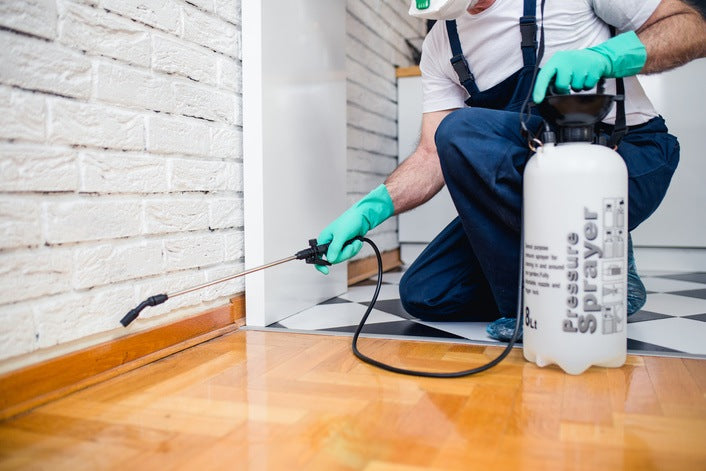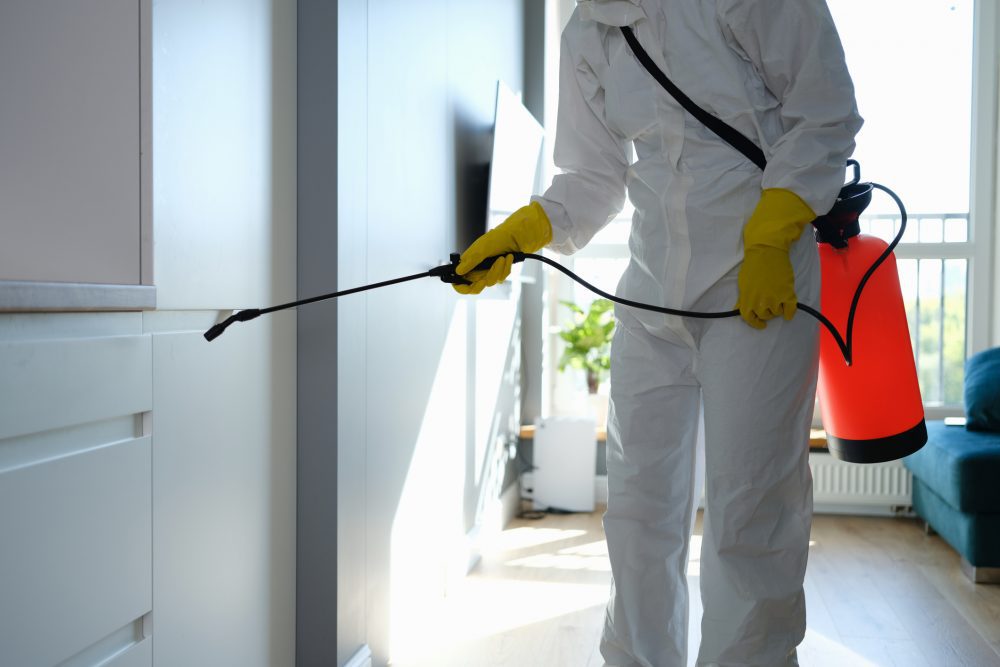Chicago Wasp Nest Removal Professionals: Rapid and Dependable Solutions for Your Pest Problems
Chicago Wasp Nest Removal Professionals: Rapid and Dependable Solutions for Your Pest Problems
Blog Article
Exploring Various Methods and Techniques for Comprehensive Pest Control in Residential Spaces
The landscape of insect control in domestic spaces has actually advanced significantly, demanding a comprehensive understanding of various methodologies that can be employed for reliable monitoring. Standard chemical therapies, while effective, are increasingly being enhanced by green choices and Integrated Bug Administration (IPM) techniques. Homeowners have to take into consideration preventative procedures, such as regular surveillance and exact insect identification, to keep a healthy environment. The genuine challenge exists in striking a balance in between effectiveness and safety-- an expedition that exposes the subtleties of each technique and its implications for lasting living.
Comprehending Insect Control Essential
Effective bug control is essential for preserving a risk-free and healthy and balanced living setting. Understanding the fundamentals of bug control entails recognizing the sorts of bugs that commonly invade domestic areas, the possible threats they pose, and the value of safety nets. Common family bugs consist of rats, pests, and various other unwanted creatures that can compromise hygiene, damage building, and cause health issues.
A crucial very first step in insect control is determining the certain bugs existing. This can include checking areas such as kitchen areas, basements, and attics, where insects are likely to thrive. As soon as recognized, it is vital to comprehend their routines, breeding cycles, and preferred atmospheres, which can educate proper control techniques.
Preventive measures are basic to efficient insect management. These consist of securing entry factors, preserving tidiness, and reducing mess to get rid of hiding places. Furthermore, proper food storage space and waste management can significantly lower the allure of a home for parasites.

Conventional Chemical Therapies
Among the different bug control approaches, typical chemical treatments have long been employed to address infestations in domestic areas. These treatments usually include the application of chemical pesticides created to remove bugs such as pests, rodents, and other unwanted microorganisms. The efficiency of these chemicals can differ, depending on the kind of insect, the formulation of the chemical, and the method of application.
Common courses of typical chemical treatments include pesticides, herbicides, rodenticides, and fungicides, each customized to deal with specific parasites. Insecticides, for instance, might target cockroaches, termites, or ants, while rodenticides are specifically created to regulate rodent populations. These chemicals are typically available in numerous kinds, including sprays, granules, and lures, permitting house owners versatility in application.
Despite their performance, standard chemical treatments elevate issues regarding possible toxicity to human beings, family pets, and advantageous microorganisms in the atmosphere. Therefore, it is critical for house owners to carefully adhere to application guidelines and security precautions to lessen risks. Integrated Parasite Administration (IPM) approaches can complement these treatments, making certain a more all natural approach to pest control while making best use of efficacy and safety in property setups.
Eco-Friendly Pest Control Options
Environment-friendly parasite control options are getting appeal as homeowners look for much safer and extra sustainable alternatives to standard chemical therapies. These approaches focus on the health of both locals and the atmosphere, lessening the influence of pest control practices.
One widely embraced environment-friendly technique is the usage of all-natural repellents stemmed from important oils, such as peppermint and citronella. These oils not only discourage insects however likewise supply pleasurable fragrances for interior areas. Additionally, diatomaceous planet, a powder made from fossilized algae, functions as an all-natural pesticide by damaging the exoskeletons of bugs upon contact, resulting in dehydration.
One more efficient technique involves advertising biodiversity in lawns and gardens. Introducing beneficial pests, such as lacewings and ladybugs, can normally manage pest populations (Chicago wasp nest removal). Furthermore, utilizing traps made from eco-friendly products can help capture and get rid of bugs without causing injury to the environment
Routine maintenance, such as securing entry factors and appropriate sanitation, more improves the effectiveness of eco-friendly parasite control. House owners can take proactive actions to avoid infestations, making certain a much more lasting living atmosphere while effectively taking care of pest-related issues.
Integrated Parasite Administration Strategies
Executing incorporated pest administration (IPM) techniques uses a detailed approach to pest control that emphasizes avoidance and long-lasting solutions. IPM integrates numerous strategies, concentrating on understanding bug behaviors, life cycles, and eco-friendly dynamics to lessen pest populations properly. This multifaceted method focuses on non-chemical methods, such as biological control, environment adjustment, and cultural methods, to lower reliance on pesticides.
A foundational facet of IPM is keeping track of and recognizing pests accurately. When treatment is necessary, this involves regular assessments and the facility of action thresholds to identify. By comprehending the certain parasites affecting domestic atmospheres, targeted treatments can be used, reducing the possibility of my response unnecessary pesticide applications.
One more important part of IPM is educating property owners regarding the relevance of sanitation and maintenance practices. By fostering an atmosphere that prevents bug invasions-- such as sealing entrance factors and handling wetness-- homeowners can significantly reduce the danger of insect problems. Additionally, when chemical controls are deemed necessary, IPM advocates for the use of the least hazardous alternatives to decrease ecological influence. With these approaches, IPM not just addresses existing parasite concerns however likewise cultivates lasting practices that promote lasting bug administration success.
Preventative Procedures for Homes
To repel potential bug infestations, house owners ought to take on a positive strategy that highlights preventative steps. This starts with preserving a organized and clean living room, as clutter and food particles attract bugs. Chicago wasp nest removal. On a regular basis vacuuming, sweeping, and wiping down surfaces can dramatically decrease the danger of problems
Additionally, sealing entrance factors is essential. House owners should examine home windows, doors, and foundation fractures for voids that can enable bugs access to the home. Using caulk and climate stripping can successfully block these entrances.
Appropriate food this post storage space is another vital procedure. Saving food in airtight containers and promptly cleaning up spills or crumbs aids hinder rodents and bugs.
In addition, managing exterior environments can avoid parasites from intruding on domestic areas. Homeowners ought to make certain that water drainage systems are functioning well, and landscaping is maintained clean. Cutting bushes and trees away from the house and removing standing water can further diminish pest environments.

Final Thought
In conclusion, efficient pest control in domestic rooms requires a complex method that incorporates conventional chemical therapies with eco-friendly methods and Integrated Bug Management techniques. By focusing on preventative steps, such as keeping cleanliness and sealing entrance factors, homeowners can considerably minimize parasite occurrences.
Understanding the fundamentals of bug control entails identifying the types of pests that typically get into property rooms, the potential risks they position, and the value of preventative actions.A critical first step in insect control is determining the certain parasites existing. Integrated Parasite Monitoring (IPM) strategies can complement these treatments, guaranteeing an extra holistic method to pest control while making best use of efficiency and safety and security in household setups.
Carrying out integrated insect management (IPM) strategies offers a comprehensive approach to pest control that stresses avoidance and long-lasting options.In conclusion, effective parasite control in household areas demands a complex technique that combines traditional chemical therapies with environment-friendly helpful site methods and Integrated Insect Management approaches.
Report this page